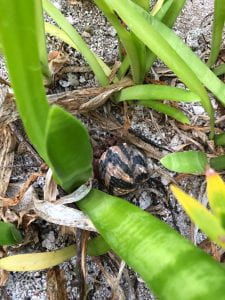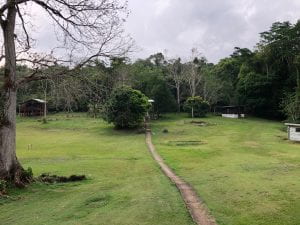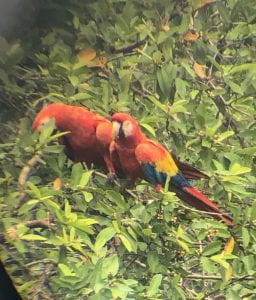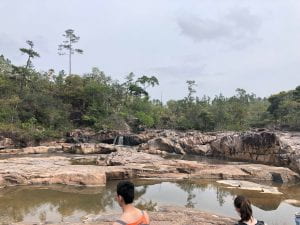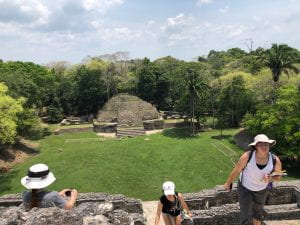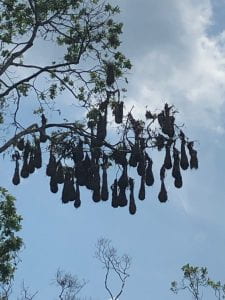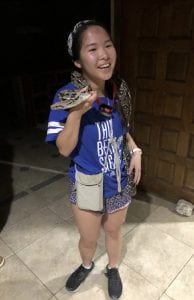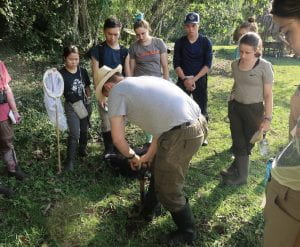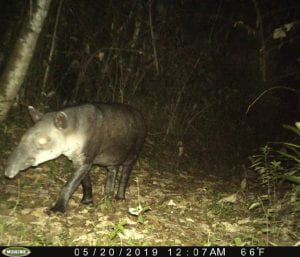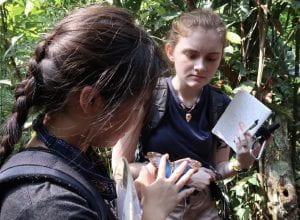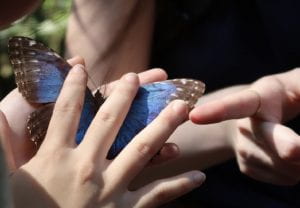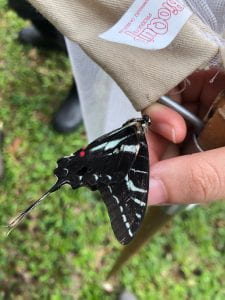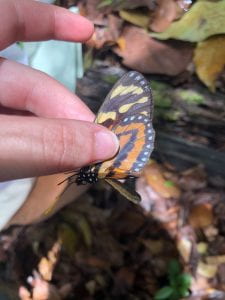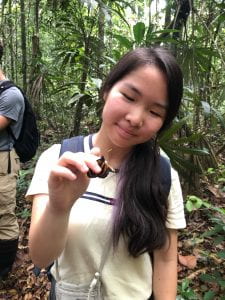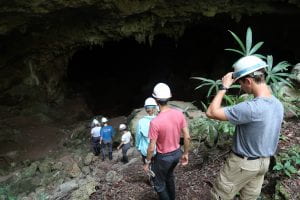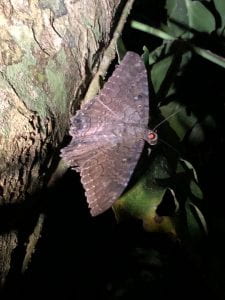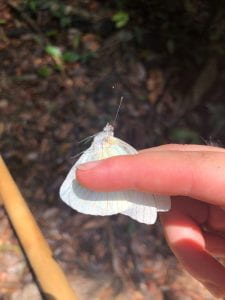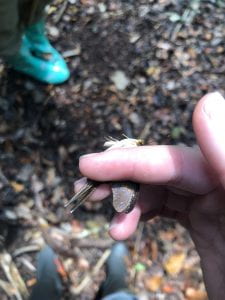After 6:00am breakfast at the Tropical Education Center, the class drove an hour and half to the marina, then three hours (in a boat) to Middle Caye in Glover’s Reef. The three-hour boat ride was quite exciting because of the high winds and choppy waves—it felt like a roller coaster. Every time the boat ascended a wave, my body would fly out of my seat; then, when the boat crashed back down into the water, my body would smack against the seat. Arriving at the research station was exciting! The view is beautiful up above and all around, and on the ground there are adorable hermit crabs scuttling about everywhere. One of the more interesting hermit crabs that I observed had a snake-like pattern on its shell with banding and scale-like coloration.
Hermit crab with snake-like shell
We tried our gear out in the ocean for the first time. While circling the patch reef, I saw several yellowtail snappers (piscivorous fish!) I also saw an upside down jellyfish and a sting ray hidden in the sea grass. The class migrated to the leeward side of the island in the hopes that the wind and currents wouldn’t be as overwhelming. To reach the leeward side, we had to run through the ‘mangroves of death’. Today, we truly experienced what the ‘mangroves of death’ mean. As soon as we reached the area, Scott took off running with little warning. We were confused, then we started feeling the bites. At one point, I had 7 mosquitoes attached to my body. These pests were swarming all over and biting through the dive skin. I have bumps all over my legs, arms, and face, and my skin feels like Braille. I don’t know Braille very well, but I believe that my right arm spells O U C H. My skin is red, blotchy, and very, very angry at the mangroves of death. We made it to the other side of the island though, and I saw fire coral, Christmas tree worms, what I believe are young grunts, and a slippery dick (Halichoeres bivittatus).
Unfortunately the only path back to the research station was through the mangroves of death. We were aware of the danger this time, but it turns out that not even speed, mad flailing, and slapping can save us from the mosquitoes. Back in my room, I saw a common house gecko crawling on the ceiling above my bed. He was unusually large—at least 15cm in length and 3cm in width (very, very fat). I spooked him and he fell from above the top bunk to the floor with a thud.
The class ended the night with lectures on corals, sponges, and reef microbes.

